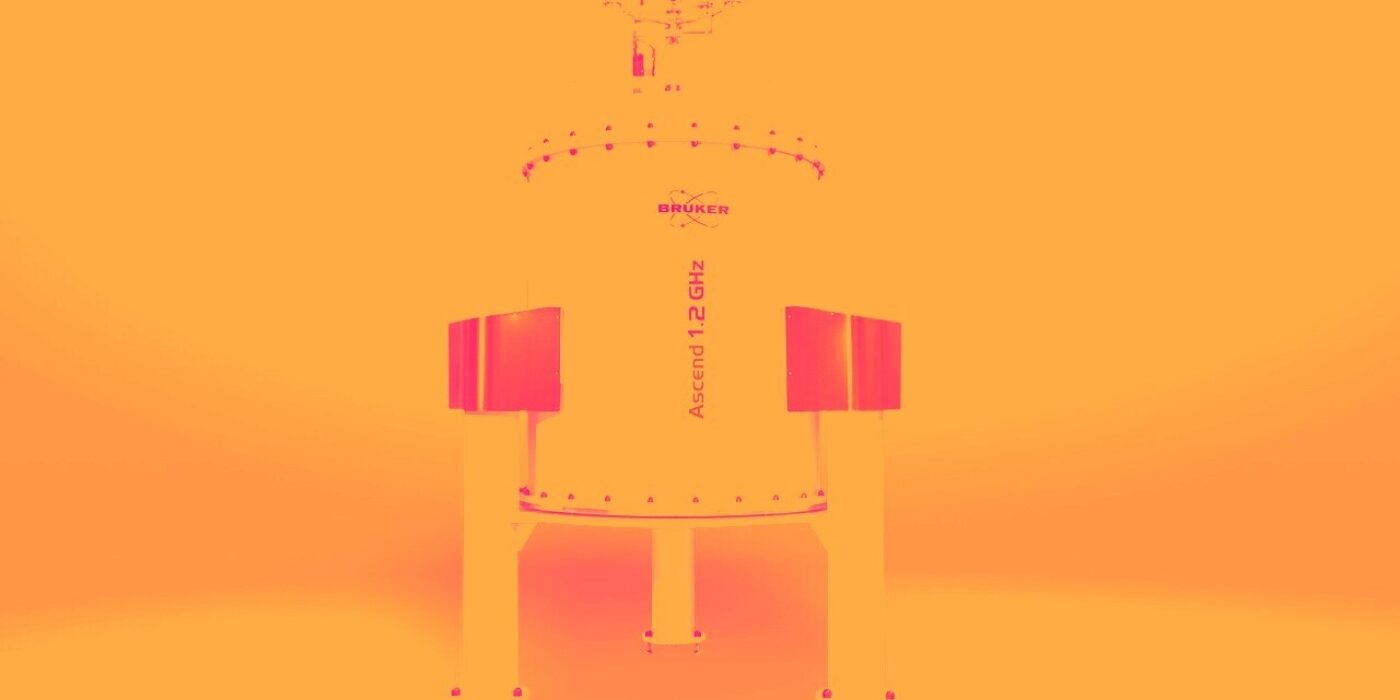
Scientific instrument company Bruker (NASDAQ: BRKR). missed Wall Street’s revenue expectations in Q2 CY2025, with sales flat year on year at $797.4 million. The company’s full-year revenue guidance of $3.47 billion at the midpoint came in 1.5% below analysts’ estimates. Its non-GAAP profit of $0.32 per share was 23.4% below analysts’ consensus estimates.
Is now the time to buy BRKR? Find out in our full research report (it’s free).
Bruker (BRKR) Q2 CY2025 Highlights:
- Revenue: $797.4 million vs analyst estimates of $809.2 million (flat year on year, 1.5% miss)
- Adjusted EPS: $0.32 vs analyst expectations of $0.42 (23.4% miss)
- Adjusted EBITDA: $96.6 million vs analyst estimates of $123.6 million (12.1% margin, 21.9% miss)
- The company dropped its revenue guidance for the full year to $3.47 billion at the midpoint from $3.52 billion, a 1.4% decrease
- Management lowered its full-year Adjusted EPS guidance to $2 at the midpoint, a 18% decrease
- Operating Margin: 1.5%, down from 6% in the same quarter last year
- Organic Revenue fell 7% year on year vs analyst estimates of 2.6% declines (443 basis point miss)
- Market Capitalization: $4.91 billion
StockStory’s Take
Bruker’s second quarter was marked by revenue and earnings results that fell below Wall Street’s expectations, leading to a significant negative market reaction. Management cited persistent weakness across its core life sciences research and industrial markets, particularly due to delayed U.S. academic funding and slow stimulus activity in China. CEO Frank Laukien described the quarter as "challenging," noting that “global tariffs, pharma pricing and economic uncertainty… have delayed biopharma and industrial research instrumentation investments.” Management acknowledged that its mitigation efforts would take several quarters to benefit operating results, with immediate impacts limited.
Looking ahead, Bruker’s revised guidance for the year reflects ongoing caution around U.S. and China research funding, as well as continued cost pressures from tariffs and currency volatility. Management is launching a broad cost reduction program targeting $100 million to $120 million in annualized savings by next year, aiming to deliver margin expansion even if revenue remains flat. CFO Gerald Herman emphasized that the majority of these savings will be realized in 2026, with a “very significant EPS rebound” anticipated regardless of market growth. The company is also monitoring the timing of academic funding releases and tariff resolutions, which could influence the pace of any market recovery.
Key Insights from Management’s Remarks
Management attributed the quarter’s shortfall to muted demand in high-end research and industrial markets, compounded by delayed academic funding and tariff headwinds, while outlining aggressive cost reduction plans and strategic product launches to navigate persistent market weakness.
- U.S. and China funding delays: Bruker experienced slower orders in both the U.S. and China due to deferred federal research budgets and delayed stimulus for advanced research instrumentation. Management highlighted that these delays weighed heavily on biopharma and academic markets, with U.S. academic government sales expected to be down 20%–25% for the year.
- Tariff and currency headwinds: The company faced increased costs from new U.S. tariffs on scientific instruments and unfavorable foreign exchange rates, which further pressured margins. CEO Frank Laukien noted that while tariffs disrupted cost structures, competitive positioning remained largely unaffected due to Bruker’s flexible manufacturing footprint.
- Aggressive cost reduction measures: Bruker announced an expanded cost savings initiative, aiming to cut $100 million to $120 million from annual expenses by next year. This program spans supply chain, manufacturing, and commercial functions, with $30 million expected to benefit the current year and the bulk realized in 2026.
- Segment and product performance mixed: The CALID Group saw strength in microbiology diagnostics (notably the MALDI Biotyper and ELITech platforms), while the BioSpin Group and BEST segment were impacted by weakness in biopharma, applied, and clinical MRI markets. Spatial biology and functional proteomics products are cited as long-term growth drivers, despite current demand softness.
- New product introductions: Bruker launched an array of new instruments in proteomics and metabolomics, such as the timsOmni and timsMetabo platforms, which management believes will enhance the company's competitive position when research funding resumes.
Drivers of Future Performance
Management sees recovery potential hinging on the resolution of funding disruptions, successful execution of cost reductions, and adoption of newly launched research tools.
- Cost savings to drive margins: The $100 million to $120 million cost reduction program is expected to deliver approximately 300 basis points of operating margin improvement in 2026, even if topline growth remains muted. Management affirmed their commitment to these cuts, regardless of market conditions.
- Academic and biopharma funding visibility: Bruker’s outlook is closely tied to the timing and scale of U.S. federal research grants and China’s stimulus for high-end instrumentation. Management remains cautious, expecting continued softness in academic demand through the end of this year but sees potential improvement in 2026 if funding is restored.
- New product adoption and market expansion: Recent launches in spatial biology, proteomics, and diagnostics could position Bruker for above-market growth as research spending recovers. Management also pointed to expansion in consumables and diagnostic assays as opportunities for more stable, recurring revenue.
Catalysts in Upcoming Quarters
In the quarters ahead, our analysts will closely watch (1) the pace and impact of Bruker’s cost reduction efforts on margins, (2) the timing and magnitude of U.S. and China research funding releases, and (3) adoption rates for newly launched proteomics and spatial biology instruments. The evolution of global tariff policies and any uptick in consumables or diagnostics demand will also be important factors in evaluating Bruker’s execution and recovery potential.
Bruker currently trades at $32.49, down from $37.97 just before the earnings. At this price, is it a buy or sell? See for yourself in our full research report (it’s free).
Now Could Be The Perfect Time To Invest In These Stocks
Donald Trump’s April 2025 "Liberation Day" tariffs sent markets into a tailspin, but stocks have since rebounded strongly, proving that knee-jerk reactions often create the best buying opportunities.
The smart money is already positioning for the next leg up. Don’t miss out on the recovery - check out our Top 5 Growth Stocks for this month. This is a curated list of our High Quality stocks that have generated a market-beating return of 183% over the last five years (as of March 31st 2025).
Stocks that made our list in 2020 include now familiar names such as Nvidia (+1,545% between March 2020 and March 2025) as well as under-the-radar businesses like the once-micro-cap company Kadant (+351% five-year return). Find your next big winner with StockStory today.
StockStory is growing and hiring equity analyst and marketing roles. Are you a 0 to 1 builder passionate about the markets and AI? See the open roles here.




